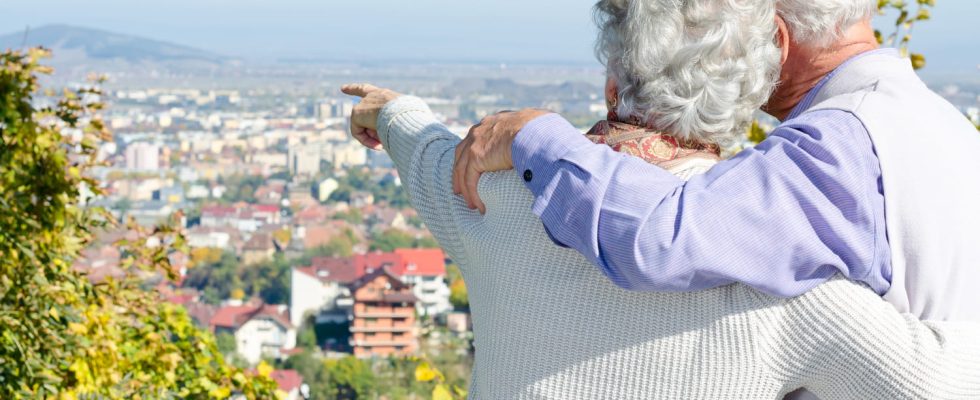A demographer has identified 5 places in the world where longevity and the number of centenarians are exceptional. He named these areas “Blue Zones” or “Zones bleues” in French. Where are they ?
A blue zone designates a place in the world where the longevity of the inhabitants is clearly above the world average. This name was invented by Gianni PesItalian academic and Michel PoulainBelgian demographer after discovering in 2000 in Sardinia (in the province of Nuoro) there highest concentration of centenarians in the world, as part of an investigation by theInternational Database on Longevity, the international longevity database. A project supported by the National Geographic Society was then launched in 2002 to identify and recordother blue zones around the worldvalidated using strict methodologies (such as average life expectancy, the number of centenarians, the proportion of widowed people, the percentage of subjects having suffered a stroke, etc.).
“Up to 31 centenarians per 100,000 inhabitants”
Professor Michel Poulain, demographer at the origin of the blue zone concept, defines in the publication “Blue Zones : areas of exceptional longevity throughout the world” published in 2016 in Gerontology and Societyblue areas like “being relatively limited areas in spacewhere the population shares the same way of life and environment and shows exceptional longevity, scientifically validated“.
To date, several blue zones have been identified around the world:
- The province of Nuoro in Sardinia (Italy) : with around 37,000 inhabitants, life expectancy is 87 years old on average. We count 30.9 centenarians per 100,000 inhabitants (2017 figures).
- The Island of Ikaria (Greece), in the eastern Aegean: with 8,000 inhabitants, life expectancy is 79.5 years for men and 85.3 years for women. Of the 9,000 inhabitants of theislandjust over 3,000 are over 90 years old (2018 figures)
- Okinawa Island (Japan): with 1,285,000 inhabitants, life expectancy is 86 years old for women and 78 years old for men. There are 42 centenarians per 100,000 inhabitants (2019 figures).
- The Nicoya Peninsula (Costa Rica): with approximately 161,000 inhabitants, life expectancy is 82 years for women and 77 years old for men. In this peninsula, 13% are over 90 years old and 5% over 100 years old (2016 figures).
- The 5th blue zone divides. For author and researcher Dan Buettner (American member of National Geographic), the 5th “Blue Zone” is thein the city of Loma Linda (United States) located in the San Bernardino Valley and the Inland Empire of California with approximately 25,000 inhabitants: on average, women live 9 years longer and men 11 years longer than other Americans. He would also have designated Singapore as the 6th Blue Zone following the 5 mentioned. For Michel Poulain, “the 5th BZ is not Loma Linda which is in fact a religious community of Adventists and not a geographic region where older people live. On the other hand, last March I identified a 5th Blue Zone which is a French overseas department of the Antilles Archipelago, the Martinique“, Michel Poulain tells us. As of January 1, 2023, this island was estimated to have more than 400 centenarians, or twice as much per capita as France as a whole. We also observe that very old Martinicans survive longer if they live on their island than those who have emigrated to mainland France. On the basis of strict scientific validation, the conclusion confers on Martinique the scientific status of Blue Zone“, we can read on his website.
For comparison, on a global scale, life expectancy is 73.36 years in 2023.
Why do we live longer in blue zones?
Michel Poulain and several of his colleagues published in October 2022 a literary magazine in Maturitas, highlighting the main keys to this exceptional longevity:
► Eating habits : “Even if each of these regions has its own eating habits, closely linked to its environment, its climate, its historical context and its culture, there would be common denominators“, explain the authors. The meals would consist of healthy, balanced, varied food, locally sourced and seasonal. Residents consume more plant proteins, fruits and vegetables, cereal products rich in fiber (whole cereals), vegetable oils and little meat, saturated fats and processed products, which contributes to better cardiovascular health. However, according to Professor Michel Poulain, the part of the diet weighs no more than 15% in the balance.
► More sustained physical activity. Residents of these blue zones would be less sedentary and would expend a greater amount of energy than average with their daily activities, such as gardening or cleaning. “In the different Blue Zones, the age at the end of working life often exceeds 80 years and the level of physical activity that we would describe as natural is often maintained beyond“, we can read in the study on the Blue Zones of 2016. One of the key principles would be to promote natural physical activity (daily) and not artificial and forced physical activity (a sports session for example).
► The environment : “the blue zones are real ecosystems where food, but above all the environment, culture, social safety nets, the historical past, air and water quality are all factors that interact to create a microenvironment favorable to longevity […] The absence of stress and the low prevalence of depression and dementia were also observed during our surveys in each of the Blue Zones” describes Michel Poulain. Family and community support would also be more marked. “Family ties as well as very close social relationships at the community level are also the prerogative of the populations of the Blue Zones. They provide undeniable support to the weakest and most deprived individuals and can therefore contribute to greater longevity.“, he continues.
► Genetic heritage would be responsible for 10% to 20% of an individual’s longevity. Genes favorable to longevity would exist in blue zones and they would be more conserved and propagated there. “A century ago, people got married in Sardinia, especially between people from the village.”, explain the researchers. No genetic study has identified these genes to date.
